Fayçal Ait Aoudia
Sionna: An Open-Source Library for Next-Generation Physical Layer Research
Mar 22, 2022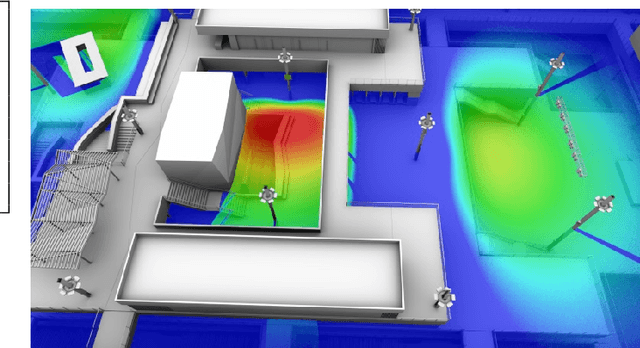
Abstract:Sionna is a GPU-accelerated open-source library for link-level simulations based on TensorFlow. It enables the rapid prototyping of complex communication system architectures and provides native support for the integration of neural networks. Sionna implements a wide breadth of carefully tested state-of-the-art algorithms that can be used for benchmarking and end-to-end performance evaluation. This allows researchers to focus on their research, making it more impactful and reproducible, while saving time implementing components outside their area of expertise. This white paper provides a brief introduction to Sionna, explains its design principles and features, as well as future extensions, such as integrated ray tracing and custom CUDA kernels. We believe that Sionna is a valuable tool for research on next-generation communication systems, such as 6G, and we welcome contributions from our community.
Waveform Learning for Reduced Out-of-Band Emissions Under a Nonlinear Power Amplifier
Jan 14, 2022

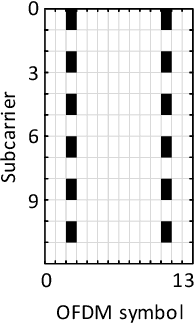
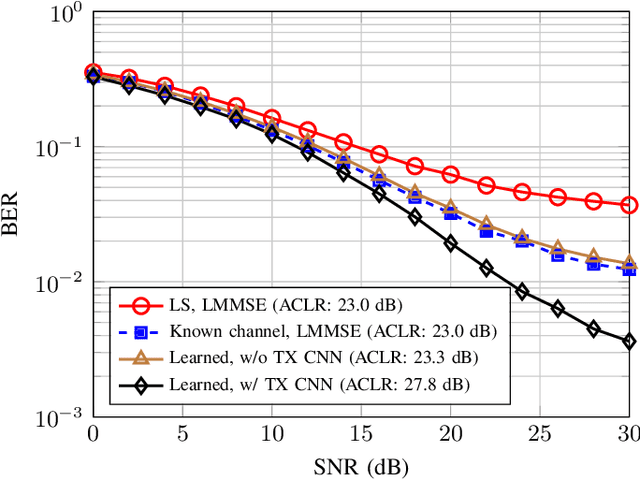
Abstract:Machine learning (ML) has shown great promise in optimizing various aspects of the physical layer processing in wireless communication systems. In this paper, we use ML to learn jointly the transmit waveform and the frequency-domain receiver. In particular, we consider a scenario where the transmitter power amplifier is operating in a nonlinear manner, and ML is used to optimize the waveform to minimize the out-of-band emissions. The system also learns a constellation shape that facilitates pilotless detection by the simultaneously learned receiver. The simulation results show that such an end-to-end optimized system can communicate data more accurately and with less out-of-band emissions than conventional systems, thereby demonstrating the potential of ML in optimizing the air interface. To the best of our knowledge, there are no prior works considering the power amplifier induced emissions in an end-to-end learned system. These findings pave the way towards an ML-native air interface, which could be one of the building blocks of 6G.
Learning OFDM Waveforms with PAPR and ACLR Constraints
Oct 21, 2021



Abstract:An attractive research direction for future communication systems is the design of new waveforms that can both support high throughputs and present advantageous signal characteristics. Although most modern systems use orthogonal frequency-division multiplexing (OFDM) for its efficient equalization, this waveform suffers from multiple limitations such as a high adjacent channel leakage ratio (ACLR) and high peak-to-average power ratio (PAPR). In this paper, we propose a learning-based method to design OFDM-based waveforms that satisfy selected constraints while maximizing an achievable information rate. To that aim, we model the transmitter and the receiver as convolutional neural networks (CNNs) that respectively implement a high-dimensional modulation scheme and perform the detection of the transmitted bits. This leads to an optimization problem that is solved using the augmented Lagrangian method. Evaluation results show that the end-to-end system is able to satisfy target PAPR and ACLR constraints and allows significant throughput gains compared to a tone reservation (TR) baseline. An additional advantage is that no dedicated pilots are needed.
Waveform Learning for Next-Generation Wireless Communication Systems
Sep 02, 2021



Abstract:We propose a learning-based method for the joint design of a transmit and receive filter, the constellation geometry and associated bit labeling, as well as a neural network (NN)-based detector. The method maximizes an achievable information rate, while simultaneously satisfying constraints on the adjacent channel leakage ratio (ACLR) and peak-to-average power ratio (PAPR). This allows control of the tradeoff between spectral containment, peak power, and communication rate. Evaluation on an additive white Gaussian noise (AWGN) channel shows significant reduction of ACLR and PAPR compared to a conventional baseline relying on quadrature amplitude modulation (QAM) and root-raised-cosine (RRC), without significant loss of information rate. When considering a 3rd Generation Partnership Project (3GPP) multipath channel, the learned waveform and neural receiver enable competitive or higher rates than an orthogonal frequency division multiplexing (OFDM) baseline, while reducing the ACLR by 10 dB and the PAPR by 2 dB. The proposed method incurs no additional complexity on the transmitter side and might be an attractive tool for waveform design of beyond-5G systems.
End-to-end Waveform Learning Through Joint Optimization of Pulse and Constellation Shaping
Jul 14, 2021



Abstract:As communication systems are foreseen to enable new services such as joint communication and sensing and utilize parts of the sub-THz spectrum, the design of novel waveforms that can support these emerging applications becomes increasingly challenging. We present in this work an end-to-end learning approach to design waveforms through joint learning of pulse shaping and constellation geometry, together with a neural network (NN)-based receiver. Optimization is performed to maximize an achievable information rate, while satisfying constraints on out-of-band emission and power envelope. Our results show that the proposed approach enables up to orders of magnitude smaller adjacent channel leakage ratios (ACLRs) with peak-to-average power ratios (PAPRs) competitive with traditional filters, without significant loss of information rate on an additive white Gaussian noise (AWGN) channel, and no additional complexity at the transmitter.
Machine Learning-enhanced Receive Processing for MU-MIMO OFDM Systems
Jun 30, 2021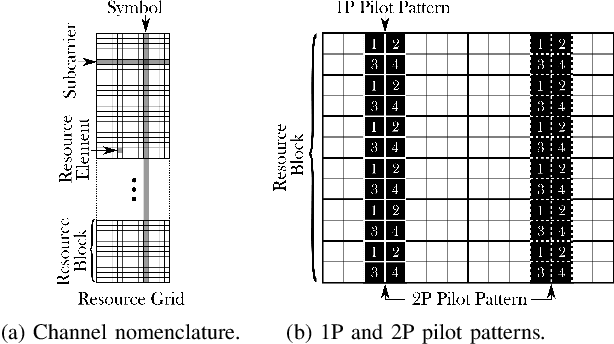
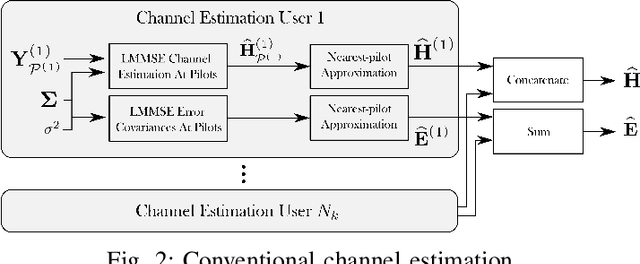


Abstract:Machine learning (ML) can be used in various ways to improve multi-user multiple-input multiple-output (MU-MIMO) receive processing. Typical approaches either augment a single processing step, such as symbol detection, or replace multiple steps jointly by a single neural network (NN). These techniques demonstrate promising results but often assume perfect channel state information (CSI) or fail to satisfy the interpretability and scalability constraints imposed by practical systems. In this paper, we propose a new strategy which preserves the benefits of a conventional receiver, but enhances specific parts with ML components. The key idea is to exploit the orthogonal frequency-division multiplexing (OFDM) signal structure to improve both the demapping and the computation of the channel estimation error statistics. Evaluation results show that the proposed ML-enhanced receiver beats practical baselines on all considered scenarios, with significant gains at high speeds.
End-to-End Learning of OFDM Waveforms with PAPR and ACLR Constraints
Jun 30, 2021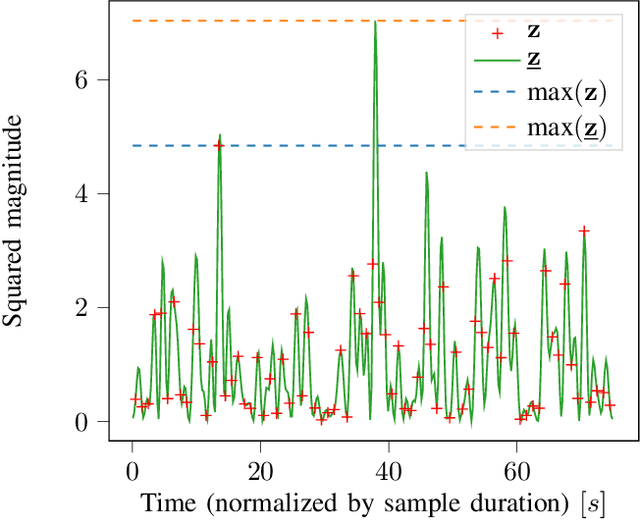

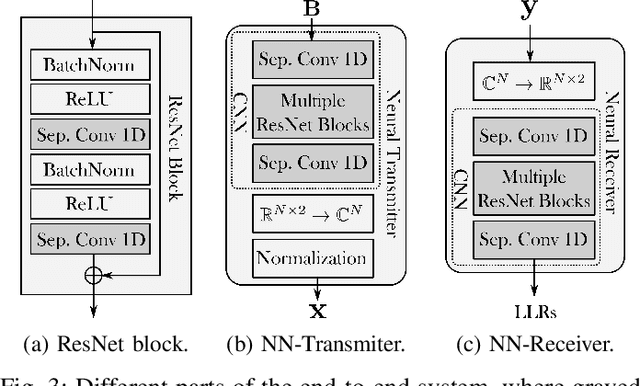
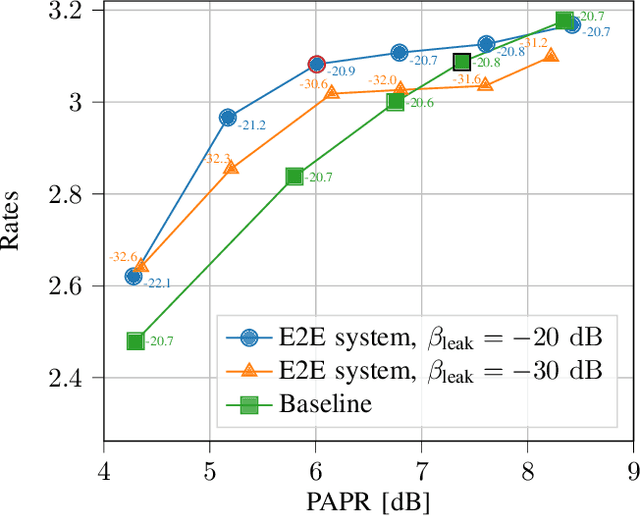
Abstract:Orthogonal frequency-division multiplexing (OFDM) is widely used in modern wireless networks thanks to its efficient handling of multipath environment. However, it suffers from a poor peak-to-average power ratio (PAPR) which requires a large power backoff, degrading the power amplifier (PA) efficiency. In this work, we propose to use a neural network (NN) at the transmitter to learn a high-dimensional modulation scheme allowing to control the PAPR and adjacent channel leakage ratio (ACLR). On the receiver side, a NN-based receiver is implemented to carry out demapping of the transmitted bits. The two NNs operate on top of OFDM, and are jointly optimized in and end-to-end manner using a training algorithm that enforces constraints on the PAPR and ACLR. Simulation results show that the learned waveforms enable higher information rates than a tone reservation baseline, while satisfying predefined PAPR and ACLR targets.
Trimming the Fat from OFDM: Pilot- and CP-less Communication with End-to-end Learning
Jan 22, 2021



Abstract:Orthogonal frequency division multiplexing (OFDM) is one of the dominant waveforms in wireless communication systems due to its efficient implementation. However, it suffers from a loss of spectral efficiency as it requires a cyclic prefix (CP) to mitigate inter-symbol interference (ISI) and pilots to estimate the channel. We propose in this work to address these drawbacks by learning a neural network (NN)-based receiver jointly with a constellation geometry and bit labeling at the transmitter, that allows CP-less and pilotless communication on top of OFDM without a significant loss in bit error rate (BER). Our approach enables at least 18% throughput gains compared to a pilot and CP-based baseline, and at least 4% gains compared to a system that uses a neural receiver with pilots but no CP.
Towards a 6G AI-Native Air Interface
Dec 15, 2020



Abstract:Each generation of cellular communication systems is marked by a defining disruptive technology of its time, such as orthogonal frequency division multiplexing (OFDM) for 4G or Massive multiple-input multiple-output (MIMO) for 5G. Since artificial intelligence (AI) is the defining technology of our time, it is natural to ask what role it could play for 6G. While it is clear that 6G must cater to the needs of large distributed learning systems, it is less certain if AI will play a defining role in the design of 6G itself. The goal of this article is to paint a vision of a new air interface which is partially designed by AI to enable optimized communication schemes for any hardware, radio environment, and application.
Machine Learning for MU-MIMO Receive Processing in OFDM Systems
Dec 15, 2020


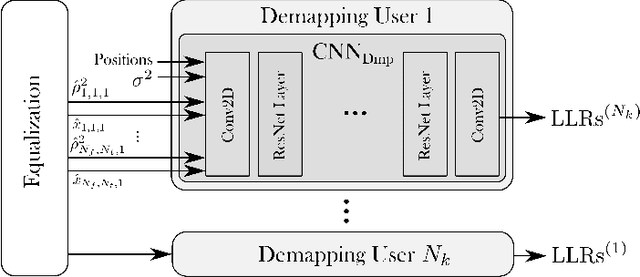
Abstract:Machine learning (ML) starts to be widely used to enhance the performance of multi-user multiple-input multiple-output (MU-MIMO) receivers. However, it is still unclear if such methods are truly competitive with respect to conventional methods in realistic scenarios and under practical constraints. In addition to enabling accurate signal reconstruction on realistic channel models, MU-MIMO receive algorithms must allow for easy adaptation to a varying number of users without the need for retraining. In contrast to existing work, we propose an ML-enhanced MU-MIMO receiver that builds on top of a conventional linear minimum mean squared error (LMMSE) architecture. It preserves the interpretability and scalability of the LMMSE receiver, while improving its accuracy in two ways. First, convolutional neural networks (CNNs) are used to compute an approximation of the second-order statistics of the channel estimation error which are required for accurate equalization. Second, a CNN-based demapper jointly processes a large number of orthogonal frequency-division multiplexing (OFDM) symbols and subcarriers, which allows it to compute better log likelihood ratios (LLRs) by compensating for channel aging. The resulting architecture can be used in the up- and downlink and is trained in an end-to-end manner, removing the need for hard-to-get perfect channel state information (CSI) during the training phase. Simulation results demonstrate consistent performance improvements over the baseline which are especially pronounced in high mobility scenarios.
 Add to Chrome
Add to Chrome Add to Firefox
Add to Firefox Add to Edge
Add to Edge